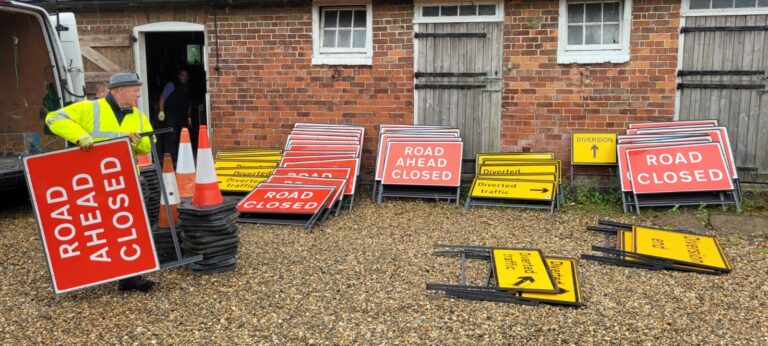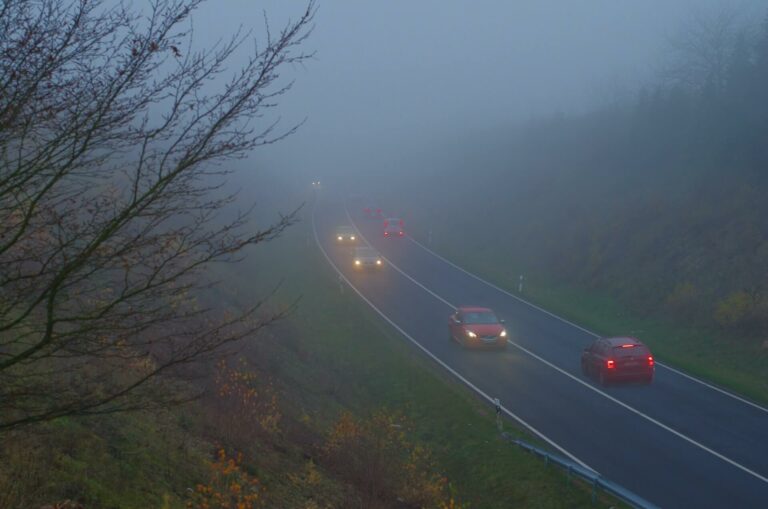This is an article written by Steve Windass, Head of Transport Planning.
There has been a recent and unheralded change in one of the key highway design documents, and the effects could be significant for some projects, so let me explain what the situation used to be, and what might change from now on. This is slightly longer read than your average blog, but hopefully, you’ll be more informed by the end of it!
When is new access not viable? One of the key factors determining the viability of some developments is whether acceptable highway access can be provided, particularly when the site frontage leaves little room to squeeze in a new junction (without the need to negotiate and buy third party land).
So ok, you’ve checked and there is enough space within the site to build an access road, with a footway or two to flank the new road. Pretty much the very next check I would look at is the connection with the main road, and specifically the visibility splays. I’ve done countless vehicle speed and visibility surveys in my years as a transport professional, because it’s not unusual for visibility splays to be constrained, and so there’s often a need to undertake an evidenced assessment of suitability.
What level of visibility is needed? As one might expect, fast-moving traffic means that side road drivers looking to pull out need to be able to see further into the distance, and this distance is the visibility splay for a junction (based on Stopping Sight Distance for drivers, or SSD).
(As well as the speed of traffic and other more site-specific factors such as gradient), the other key determinant in establishing visibility requirements is which highway design guidance to apply. In one corner stands the Design Manual for Roads & Bridges (DMRB), the old (but recently updated) stalwart that only strictly applies to trunk roads and sets cautious visibility requirements with plenty of safety buffer built-in. Whereas the Manual for Streets (MfS) stands in the opposing corner (assisted by younger brother Manual for Streets 2), with knowledge gleaned from newer research that indicates we shouldn’t provide too much visibility because it results in faster (and less safe) driving.
Which highway guidance is applicable? This can be a very debatable subject, and as with most highway subjects, the answer is often not black or white. If the major road is a trunk road (requiring permission from Highways England), then DMRB is mandatory…but 97% of UK roads are not trunk roads, they are managed by local authorities (or possibly regional bodies such as Transport for London/Greater Manchester).
For local roads, there is a somewhat subjective choice between DMRB and MfS, loosely based on the broad vehicle speeds, with MfS possibly applicable where speeds are below 40mph, and DMRB possibly applicable above this. I don’t have space to cover this differentiation in this blog (it would take several blogs!), but a change in one of these documents may have implications irrespective of whether MfS or DMRB is applicable.
Dry or wet? In any highway design document I’ve ever seen, the advocated approach would be measure vehicle speeds, ideally in dry conditions (not always possible with the good old unpredictable British weather!), and then convert the results to be reflective of a wet weather scenario, given that we know people drive slightly slower in wet conditions than in dry.
This conversion actually means reducing the recorded speed figure. So for example, if a speed survey measures 41mph, the guidance needs this to be reduced by 4kph (or 2.48mph in old money), so roughly 38.5mph in this example. Both MfS and DMRB has (to my knowledge) always used the wet weather version of the 85th percentile speed for the purposes of assessing visibility. So we’re not using the mean/average speed, we’re designing to a reasonable upper level (i.e. only 15% of the recorded speeds are faster), but the guidance requires this upper level to be reduced a bit.
What’s changed? The relevant chapter of DMRB (CA 185) was updated in November 2019, with no fanfare or notable announcement (in fact, I’ve picked up the impression that many people in the industry aren’t even aware that anything has changed).
The old version of the chapter was almost 3 decades old (1981, before I was even born!), and the update is mainly to refresh the guidance and ensure its fit for purpose. However, there has been a seemingly small and unexplained change that could render some schemes undeliverable. The guidance now requires that the dry weather 85th percentile speed is used in calculations, not the wet weather 85th percentile speed.
Seems like a subtle change right? Yes, it is subtle, we’re only talking about a reduction of 2.48mph…however, I’ve worked on lots of schemes where 2.48mph can be the difference between visibility that meets the guidance and visibility that doesn’t. I’ve verified with the document owner at Highways England that this is an intentional and deliberate change.
What’re the implications? In basic terms, every access designed to accord with DMRB will need more visibility, which means a bigger chunk of land that remains clear of obstruction…a chunk of land that might not be available in some instances. At the upper end of the spectrum, this could mean visibility splays that are 80m longer. There hasn’t been a change in MfS (or MfS2 guidance) in this regard, and the documents are unlikely to be amended any time soon for this sole reason, but as MfS echoed the same methodology as the historic DMRB, there’s a chance that the use of dry weather speeds could become ‘the norm’. If not, then the debate over whether to apply DMRB or MfS will become even more important with this change, as it now affects both the visibility requirements and the applied speed measurement.
What do I think about the change? I understand from speaking to the author that this change is not a result of new research, but rather a rationalisation and review of the old guidance. Therefore it might be right to question whether there is a need to change this specific part of visibility calculations when there’s not a specific evidenced reason for the change.
That’s not to say that I completely disagree with the change, as it is arguably more intuitive, but I think it’s fair to say that the implications of making visibility splays that little bit harder to achieve have not been at the forefront of the thinking behind the DMRB update (perhaps understandably, as road safety is a key priority for the authors).
Time will tell how and where this new guidance is applied because it’s certainly been a slow uptake from my position looking across the wider industry (although the industry wasn’t too quick to embrace MfS either).
Any last words of advice? Visibility splay calculation can be straight-forward and require little special consideration. But they can be complex and require a good understanding of the different variants and methodologies involved. I believe that this change merely highlights that there is a need to be keenly aware of the multiple factors involved in visibility assessment, as another variable has now been thrown into the mix, and it could be a deal-breaker.
There’s rarely a situation I’ve come across where a practical solution cannot be found though, so all is not lost, it’s just (possibly maybe) a little bit trickier than it used to be.
Feature photo by Cris Ovalle on Unsplash.












Paul Stavropoulos
Hi Rob
Very informative thank you.
With your wealth of experience is it possible to access my freehold off an A road onto a Deeded Right of Way by a new dropped kerb in a 30mph with only approx 32metres splay beside. Other side is adequate.
Highways have indicated splay is way short so have withdrawn our planning application for now. Still doing a speed survey though hoping for a miracle.
Is there any appeal/concession we could rely on like special condition..road signs, exiting to the left only etc??
Would really appreciate any advice.
Regards
Paul
Steve Windass
Hi Paul, thanks for your feedback, it is much appreciated.
In terms of your site-specific query, we’d be happy to take a look at the details and see whether visibility splays could be achievable at your site access. As mentioned in the blog, there are lots of different potential variables to consider, so even when there doesn’t appear to be much hope on the face of it, there may still be options to make the access viable. We work across the UK, so we will have a look at the response from the local highways officers to see if we can help. I’ll send you an email and we can discuss your project further.
Thanks, Steve
Rick Ashby
Hi Steve, very informative article regarding visibility splays.
I have a building plot in a small village in Wales with access to the site onto a minor road, the visibility splay conforms with the rules but there is a street sign, ( junction ahead ) which is currently in the line of sight. Is this acceptable or do I need to get this moved back by the council.
Many thanks,
Rick Ashby.
Des Nos
Hi
I could do with some advice as the local authority has approved a splay based on 2.4 from the carriageway but it’s a large road between M1 and A1 and 20000 vehicle a day use it . Should they nor use the 4.5 meter distance